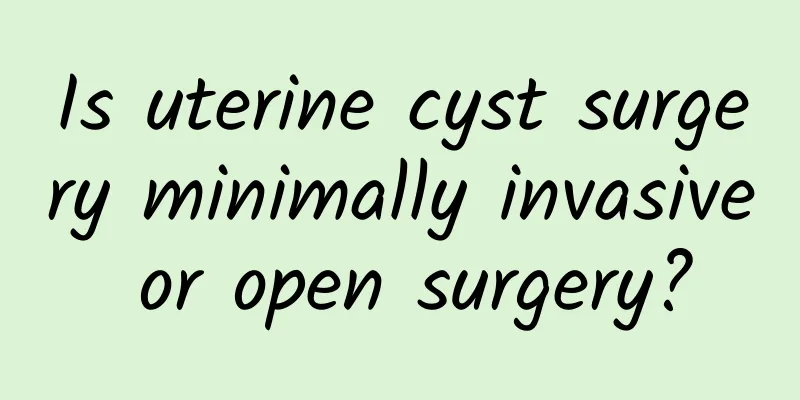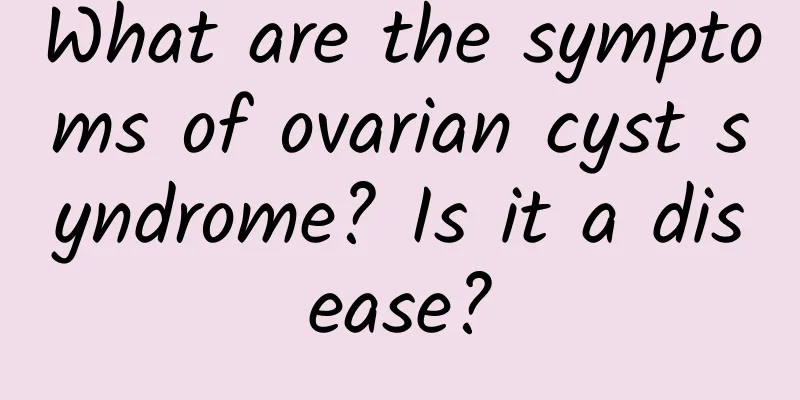Is uterine cyst surgery minimally invasive or open surgery?

|
Uterine cyst surgery usually uses minimally invasive methods, including colposcopy, hysteroscopy, and direct vaginal surgery. 1. Colposcopy: This method is a good choice for superficial cervical glandular cysts. Through the colposcopy, the doctor can clearly see the bluish-white cysts on the surface of the cervix. Just like using a magnifying glass to observe tiny things, this surgical method is simple and effective. 2. Hysteroscopic surgery: Some cysts are located deep and no obvious abnormalities can be seen on the surface. A hysteroscope can be inserted from the cervical opening to help doctors see and treat these deep-hidden cysts. It is like finding the exit in a complex maze. Hysteroscopy makes the surgery more precise. 3. Direct surgery in the vagina: For patients with a small number of cysts and good exposure, direct surgery is a quick choice. Just like trimming a small amount of weeds in the garden, this method is simple and efficient. Cervical gland cysts are mostly physiological changes, often caused by local damage or chronic inflammation. If the cyst is large or bleeding, surgery is necessary. A pathological examination is performed after surgery to ensure that there are no other potential problems. Just like checking for leaks after repairing a house, a pathological examination can help prevent future health risks. 4. Postoperative care: After the operation, you should pay attention to rest, avoid heavy physical labor, and maintain good living habits. Just like plants need proper sunlight and water, the body also needs time and suitable conditions to recover. 5. Regular follow-up: Even if the surgery is successful, regular follow-up is important. Checking can help you find and address any new problems. It's like having your car serviced regularly to ensure it's functioning properly. 6. Psychological support: Surgery and recovery may bring psychological stress. Appropriate psychological support and communication can help patients cope better. Just as teamwork makes work smoother, psychological support can make recovery easier. These methods and suggestions not only help patients understand surgical options, but also provide practical guidance for postoperative recovery. Through scientific treatment and careful care, patients can better maintain their health. |
<<: What is candidal vaginitis?
>>: How long should I stay in bed after laparotomy for uterine fibroids?
Recommend
What to do if you have irregular menstruation at the age of 18? 4 ways to check irregular menstruation at the age of 18
What should I do if I have irregular menstruation...
What are the symptoms of pseudocervical erosion?
Cervical erosion is not an independent disease, b...
What are Monacolin K and Ankascin 568-R in Red Yeast Rice? Nutritionist Decrypts
The National Nutrition Survey pointed out that th...
Should I apply ice or heat first when I get hurt? Nutritionists help you decipher exercise myths!
In recent years, the trend of exercising has beco...
What should I do if my menstruation comes once every two weeks?
What should I do if my period comes once every tw...
What is ovarian cyst and how to prevent recurrence
What is ovarian cyst? How to prevent recurrence? ...
Which antibiotic is better for adnexitis?
Which antibiotic is better for adnexitis? Patient...
If you have adnexitis, you will usually have back pain.
Adnexitis usually causes back pain. If you always...
Choose the treatment method for adnexitis according to the symptoms
Women need to pay more attention to the treatment...
Diagnosis and treatment of congenital absence of vagina
Congenital absence of vagina quietly breaks into ...
What are the main symptoms of Bartholinitis?
Bartholinitis is a disease with a very high incid...
Pelvic inflammatory disease may present with menstrual abnormalities
Pelvic inflammatory disease may manifest as abnor...
Gold standard for diagnosis of cervical precancerous lesions
Cervical precancerous lesions have caused many pe...
How much HCG should be taken to rule out ectopic pregnancy?
If HCG is greater than 15000IU/L, ectopic pregnan...
What are the symptoms of submucosal uterine fibroids? What should I do if I have submucosal uterine fibroids?
Introduction to this article: What are the sympto...









